|
| |
Outdoor Photography - 2004 Book of the Month List
Every month,
Outdoor Photography
Magazine, a British publication, writes reviews of several
recently published books and they select a Book of the Month. I started to
gather these reviews in September of 2003 and have taken the liberty to
publish a list of these book reviews as recommendations for outstanding
photography books.
|
Book of the Month: 2004 |
Christmas
Special
Issue |
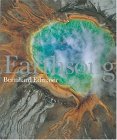 Earthsong by
Bernhard Edmaier Earthsong by
Bernhard Edmaier
Among the posse of heavyweight hardbacks fighting for prime space on the
nation's coffee tables this Christmas, Steve Bloom's
Untamed and Eric Valli's
Himalaya are destined to be at the
forefront of your local
bookseller's window display. While both are impossible to ignore, I
would implore all connoisseurs of photography to keep their eyes peeled
for Earthsong, a magnificent collection of around 200 photographs
featuring our planet's diverse topography, as viewed from the air. Before you start dismissing this idea as just another spin on Yann
Arthus-Bertrand's
Earth from the Air, think again.
Earthsong is very
different in that photographer Bernhard Edmaier treats the incredible
array of lava plains, red desert sands, glaciers, salt pans and twisting
estuaries as a palette of rich colours and puzzling shapes to be
engagingly arranged in the viewfinder. Some of the results are nothing
short of exquisite and the superb production values of this book ensure
that the sheer quality of the plates shines through. Earthsong is
divided into four parts, each describing, each describing the elemental
nature of the environments that cover the earth's surface. We begin with
Aqua, which features water in all its magical forms from the twisting
channels of Iceland's glacial ice thaws to the almost Martian-like dray
salt swamps of Tanzania's Lake Natron. The other chapters are Barren,
Dessert and Green, where geography gives way to more obvious sings of
life, although the significant factor about all these pictures is that
non are marked or shaped by human habitation or incursion. Like
Earth from the Air, there's a powerful aestheticism in the composition of many
of the image, but in my opinion, Earthsong is the more beautiful
result.
Reviewed by Keith Wilson. |
| Amazon US |
Amazon UK |
Amazon CA |
|
December |
 Horses by Yann Arthus-Bertrand and Jean-Louis Gourard Horses by Yann Arthus-Bertrand and Jean-Louis Gourard
My love of horses is well known in the office, so when this
book by the legendary aerial photographer Yann Arthus-Bertrand appeared,
there were no questions — it was just quietly placed on my desk. For a
man who is renowned for spending so much time above ground,
photographing for his
Earth from the Air collection, it comes as
a bit of a surprise to discover this body of work about creatures who
keep all four feet (or hooves) firmly on the ground (well, most of the
time). However, his passion for the subject, and the zeal with which he
has pursued this project around the world is breathtaking. Not for him
the classic, static head shot or full length photograph — instead we
see the horse with all its power and grace encompassed in one image. And
it's the sheer variety of both breeds and countries of origin that is so
enthralling. In this book, the horses are photographed in front of the
canvas which he and his assistants carted around the world, but often he
takes a step backwards to show both horse and canvas in context — whether it's mountains in Mongolia, monasteries in Spain, or deserts in
Qatar. This book gives us the opportunity to see the beauty not just of
the finer, showier breeds, but also of the elegantly solid heavy draught
horses, tiny cartoon-like Shetlands, and even the humble donkey — and
throughout, the relationship between horse and owner shines through.
Accompanied by fascinating text, this is a book not just for the horse
lover, but for anyone who wants to learn just how far a single
photographic project can be pursued.
Reviewed by Ailsa McWhinnie. |
| Amazon US |
Amazon UK |
Amazon CA |
|
November |
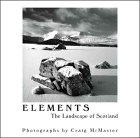 Elements: The Landscape of Scotland by Craig McMaster Elements: The Landscape of Scotland by Craig McMaster
Craig McMaster's pictures of his native land represent the moment you
turn a corner and are overawed by the sheer breathtaking beauty of what
lies before you. pager after page, he has captured the moment when you
remember why it is a joy to be alive. Although his work is grounded in
the physical landscape, in all its brooding Celtic majesty, his images
transcend this earth and melt into air. Amid images of snow-capped peaks
and ancient trees, the inclusion of a four and half hour exposure that
reveals the ethereal glory of Polaris and Star Trails at Loch Broom is
inspired. The medium of black & white is as appropriate as the title of
the collection, as we witness the framing of each loch, each stone,
pared down to its most simple and truest form. In his introduction,
McMaster pays tribute to early environmentalists like Ansel Adams and
John Muir. When Muir asked in 1875, 'What is the human part of the
mountain's destiny?' perhaps this collection is part of the answer.
Reviewed by Max Houghton. |
| Amazon US |
Amazon UK |
Amazon CA |
|
October |
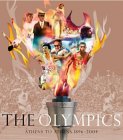 The Olympics: Athens to Athens 1896-2004
by various The Olympics: Athens to Athens 1896-2004
by various
By the time you read this, the Olympics will have finished. And, as
ever, they will have left one or two images burning in the popular
consciousness. Sporting events on a grand scale have a knack of
capturing the public's imagination and throwing up a series of moments
that will live forever. The nature of those images is never the same and
the Olympic games have always had the capacity to divide the world, as
well as unite it. The Olympics: Athens to Athens 1896-2004 showcases a
huge variety of photos, displaying the many facets of Olympic
competition, from the moustachioed competitors at the inception of the
modern era in 1896 to Cathy Freeman's all-in-one sprint suit at Sydney
2000, this book charts the course of the games on and off the track.
With so many outstanding photographs, it is hard to choose between them,
but for me the images of Jesse Owens defying Nazi propaganda to win four
golds at he 1936 Berlin Olympics stand out as those that best
encapsulate the Olympic ideal. Reviewed by James Beattie. |
| Amazon US |
Amazon UK |
Amazon CA |
|
September |
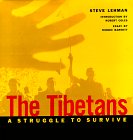 The Tibetans: A Struggle To Survive by Steve Lehman The Tibetans: A Struggle To Survive by Steve Lehman
If your ideas of Tibet are founded upon fantasies of a distant and
mysterious place in which people exit in a timeless 'Buddhist bubble,'
some of the images in this book by Steve Lehman, an internationally
celebrated photographer, will shock and surprise you. Monks hurling
stones, cows feeding on trash, street children and derelict buildings
all feature alongside testimonials from Tibetan people describing the
impact the Chinese invasion has had on their everyday lives. This
startling account of Tibetan life takes the form of a scrapbook into
which Steve Lehman pastes his observations and memories. Ticket stubs,
visas and travel permits, doodles, poems, and fragments of maps are
arranged into montages that no only create visual texture, but highlight
how this creation of this book was a truly personal journey for him.
Panic and distress are captured effectively within photographs of public
demonstrations. They are blurred, close up and grainy, presenting the
reader with a fleeting glimpse of terror that feels frighteningly
intimate. Part of the success of this book is that it echoes with the
voices of ordinary Tibetan people. Monks, laborers, shopkeepers,
artists, farmers, political prisoners, factory workers and students
appear in carefully annotated portraits in which their indomitable
spirit never fails to shine through. Lehman, over a 10-year period,
meticulously researched, photographed, collected, talked, listened and
observed cultural and political upheaval in Tibet. The result is a
stunningly presented, but deeply unsettling, piece of photojournalism
that will leave a lasting and sincere impression. Reviewed by
Virginia Brehaut. |
| Amazon US |
Amazon UK |
Amazon CA |
|
August |
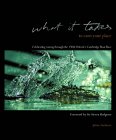 What It Takes To Earn Your Place by Julian Andrews What It Takes To Earn Your Place by Julian Andrews
While most students are either tucked up in bed or slumped in a bar
waiting for the drink-fuelled disorientation to pass, there are a few
exceptional young men and women who choose a 6am start on the River Ouse
over a swift point. These people might seem a little crazy, but their
dedication is brought on by a burning desire to win the UK's most
prestigious rowing competition: the Oxford v Cambridge Boat Race. As
former Oxford Blue Matthew Pinsent explains: 'In other walks of life
there is much to achieve even if you don't win, whereas in the boat Race
it's all or nothing. it's win or be damned.' This collection of over 200
images by professional photographer Julian Andrews marks the 150th
anniversary of the Boat Race, capturing 'the pain of top-level training,
the beauty of the river in its different moods and the emotion of the
sportsman, set against the background of student life.' From
documentary-style pictures of blistered knuckles to colour shots of the
rowers in full swing, the book follows the crews as they struggle to
balance life as athletes with life as students: the highs and lows of
training, selection, and time on and off the water. A fascinating read
for rowers and photographers alike. Reviewed by Tracy Hallett. |
| Amazon US |
Amazon UK |
Amazon CA |
|
July |
 Bound For Glory: America in Color 1939-1943
from the FSA/OSI Collection, Library of Congress Bound For Glory: America in Color 1939-1943
from the FSA/OSI Collection, Library of Congress
In his informative and lively introduction, Paul Hendrickson writes:
'There is a powerful inclination for may Americans of a certain age to
believe that the Great Depression somehow existed in monochrome.' This
book won't alter that perception but such is the quality and power of
the colour images selected that one wonders why they are not better
known already. The photographers of the Farm Security Administration and
later the Office of War Information included such luminaries as Walker
Evans, Dorothea Lange and Arthur Rothstein, whose black & white images
of this time have helped define the American identify. Colour then was
still something of a novelty but, in all, FSA/OWI photographers made
1,616 exposures on a revolutionary new film called Kodachrome. This
book is a sample of that archive and what a fabulous collection it
represents. Unusually for colour documentary, there is a lyricism and
graphic beauty in the composition of many of these images. A lot of this
is down to the colour density of early Kodachromes — the fidelity of
reproduction of skin tones, clothes, and natural colours is a
revelation, and shows how unnaturally modified our tastes in colour have
now become. But more importantly, this is one collection where colour
has enhanced the authority of these images a s record of times of
extraordinary courage and self-sacrifice. Reviewed by Keith Wilson. |
| Amazon US |
Amazon UK |
Amazon CA |
| |
|
|
June |
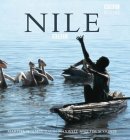 Nile
by Martha Holmes, Gavin Maxwell & Tim Scoones Nile
by Martha Holmes, Gavin Maxwell & Tim Scoones
For many people, myself included, knowledge of the River Nile is limited
to the well-known fact that it is the longest river in the world. This
latest book from the BBC, accompanying a three-part television series of
the same name, is flooded with staggering statistics that enhance the
sheer magnitude and magnificence of the Nile. For example, did you know
that the river drains more than 3,000,000 square kilometres and
stretches for 6,700km? These facts and figures merely provide the
framework from which a much wider story is told. The Nile was the life
source of the Ancient Egyptians and their dependence on it became
mysterious and mythological. If you are interested in ancient
civilisations, geography, natural history, or are simply an armchair
traveler, there will be something here to enthuse you. For
photographers, the book boasts stunning wildlife shots along with
impossibly sweeping vistas of lush fertile gorges and lakes. A complete
and expansive book from the BBC. Reviewed by Virginia Brehaut. |
| Amazon US |
Amazon UK |
Amazon CA |
|
May |
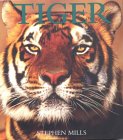 Tiger
by Stephen Mills Tiger
by Stephen Mills
Tigers have a religious significance and supernatural potency in the
spiritual lands of Asia, and unless we adopt a similar viewpoint to that
of our Asian counterparts, these scarce creatures will become extinct.
There are as few as 5,000 wild tigers worldwide, which makes this book
he most precious coffee table commodity to exist. Laden with
information, interesting facts and meaty stories, (some of which may or
may not bring a tear to your eye), the authoritative Tiger book
provides first hand experiences from various naturalists and experts who
have studied tigers and their behavioural patterns for years. Stephen
Mills, a naturalist all his working life, challenges the old with the
new, as he discovers that tigers are becoming less violent towards each
other and more used to humans, which begs the question... man-eater or
captive kitten? 'Tigers are quite simply the most beautiful animal
on earth. They are so amazingly orange, so bright, sometimes so
surprisingly invisible.' Stephen Mills has been studying tigers in India
and Nepal since the 1980s. His feelings are entrenched in the dramatic
images he has captured throughout the book. However, such a powerful
creature commands a greater picture presence. Interesting point:
'...estimated that a male tiger needs 7,920 pounds of living meat to
sustain him for a year.' Reviewed by Samantha Cadwallader. |
| Amazon US |
Amazon UK |
Amazon CA |
|
April |
 My Morocco: Bruno Barbey Introduction by JMG Le Clizio My Morocco: Bruno Barbey Introduction by JMG Le Clizio
Forget all your expectations. Between the covers of this substantial
book lay all the photographic surprises and thrills you could ever wish
for. Turn each page and gasp with delight. Composition, content, and
colour merge into some of the most outstanding travel photography I have
ever come across. The intimacy of the pictures derives from two sources
— Bruno Barbey's childhood spent in Morocco, and untold patience over a
thirty year period of picture taking. Smells, sounds and stories exude
from the graphic, colourful images, drenched in the extraordinary light
of the place. The people emerge, reluctant subjects, from their ancient
surroundings like biblical characters, a wary eye on the camera but a
trust in the photographer — he is, after all, one of them despite his
French birth. A Magnum photographer, Barbey is both photojournalist and
fine art photographer, published an exhibited all over the world, but
Morocco is his special place where he returns to again and again — for
him it's seeped in memory and familiarity. Thus, there's a quietness in
the pictures that reflects his ease with the place that no outsider
could achieve — and there is, of course, his exceptional skill as a
photographer. This is not a book to miss — done be daunted by the price
tad, it's worth every pound. Reviewed by Elizabeth Roberts. |
| |
Amazon UK |
Amazon CA |
|
March |
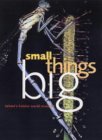 Small Things Big: Close-Up and Macro Photography by Paul Harcourt Davies Small Things Big: Close-Up and Macro Photography by Paul Harcourt Davies
I' have never lost my sense of wonder for what lies just beyond the
familiar,' writes Paul Harcourt Davies in this, the latest of his books
on close-up & macro photography. Paul has a knack for identifying and
recording patterns and symmetry in nature, both visual and mathematical.
From delicate whorls on a seashell to the bulbous eyes of insects, Paul
uses simple equipment to isolate aspects of Mother Nature that often go
unnoticed — enlarging the beauty of the natural world until it's larger
than life. The child-like simplicity of the title, Small Things Big,
is a good indication of the ease with which Paul's instructions can be
followed. The test is richly illustrated, and the captions detailed and
informative. Paul talks you through buying a 35mm SLR system, lens
basics, selecting the correct exposure, film and filters as well as
digital techniques and image manipulation using PhotoShop. Take a look
at the amazing sequence of the shots of Privet Hawk moth larva hatching.
My only criticism with a few of the shots is the visible flash, in many
instances it makes the colours seem garish. Apart from that, this book
is a great starting point for anyone wanting to take their photography
to the ground level — and beyond. Reviewed by Tracy Hallett. |
| |
Amazon UK |
Amazon CA |
|
February |
 Wild Peak: A Natural History of the Peak District by Mark Hamblin Wild Peak: A Natural History of the Peak District by Mark Hamblin
I often think that some of the best photographic books aren't actually
about photography per se. You don't learn about apertures and shutter
speeds, focal lengths and fill-in flash from them — but you do see what
it takes to become an accomplished, rounded photographer. If you can
glean some inspiration from it, it's done its job as well as any
technical manual can. One case in point, is Wild Peak, by regular
Outdoor Photography
contributor, Mark Hamblin. In the many years he spent living close to the
Peak District National Park, Mark built up a formidable library of
images of the area, and many of them are included here. It must be
difficult to know how to divide a book like this into chapters. It could
have been approached in one of many ways: by area, by species, by
subject... In the end, it has been divided into seasons. Wise
choice, as the pictures demonstrate the wide variety of natural life
that teems in this region at any one time of year. From mountain hares
to hen harriers, wild orchid to water voles (not to mention butterflies,
adders, damselflies and red deer), no stone is left unturned. This book
doesn't only reveal the diversity of the Peak District, it also reveals
the diversity of Mark's photographic abilities. In fewer than ten years
as a professional photographer he has developed remarkable skills not
only for bird and wildlife photography but also with landscape, general
nature and macro work. None of the areas suffers in favour of another.
Last year Mark moved away from Sheffield, to Scotland. I'm sure we can
expect a thorough, accomplished and enjoyable publication abut his new
home territory in years to come. Reviewed by Ailsa McWhinnie. |
| |
Amazon UK |
Amazon CA |
|
January |
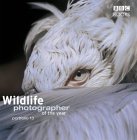 Wildlife Photographer of the Year: Portfolio 13 edited
by Anna Levin Wildlife Photographer of the Year: Portfolio 13 edited
by Anna Levin
When a competition attracts more than 20,500 entries, you know that the
judges must have sweated blood and tears to make a final selection and ,
wow, what a selection. Featuring 109 winning and highly commended images
from this year's competition — organised by BBC Wildlife Magazine
and the Natural History Museum — the book simply pulsates with stunning
photographs covering everything from animal behaviour and the underwater
world, to urban & garden wildlife, natural composition & form. A
celebration of life on earth, the images range from a leaping proboscis
monkey to a pair of courting Galapagos albatrosses and a queen wasp
building her nest. The photographs rush towards the edges of each page,
with captions kept to a functional minimum, allowing the images to burst
forth from the paper. The final section of the book concentrates on
those talented youngsters who excelled in the Young Photographer of the
Year category — open to entrants aged 17 or under. These pictures are
just as stunning as the rest, one in particular caught my eye:
Mountain Goat and Kid by Stephen Lingo. if you think you are up to the
challenge, flick to the back of the book and send off for an entry form
for next year's contest — go on, I dare you. Reviewed by Tracy
Hallett. |
| Amazon US |
Amazon UK |
Amazon CA |
| |
|
For other book lists on photography, check out these pages on
our website:
|
